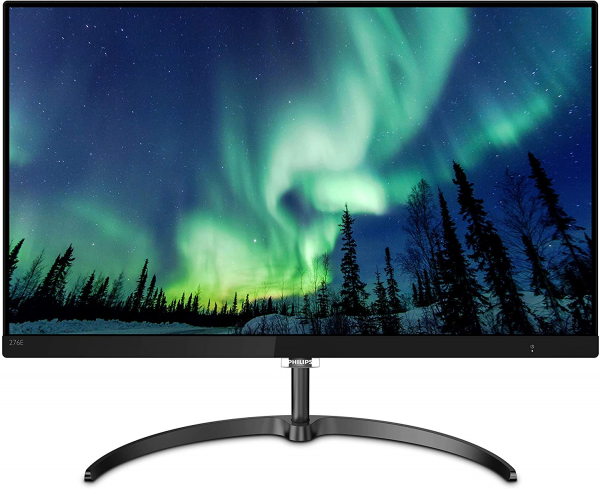Philips
Philips 276E8VJSB: an affordable 27-inch Ultra HD IPS monitor
Aprox. 249€
See specificationsThe Philips 276E8VJSB is part of this new generation of affordable Ultra HD monitors that swap the usual TN panel for IPS technology, which is better in many ways. Let's see if she keeps her promises here ...
Positive points
Design.
Good image quality.
Wide viewing angles.
Good value for money.
Large workspace thanks to Ultra HD definition.
Bad points
No USB hub.
Limited orientation (no height adjustment, no pivot).
Limited contrast.
Size of characters in native definition.
Our review
Presentation
The Philips 276E8VJSB has a 27-inch (≈69 cm) IPS panel with an Ultra HD resolution of 3 840 x 2 160 px. The manufacturer announces a contrast ratio of 1000: 1, a maximum brightness of 350 cd / m² and viewing angles of 178 °. This model is content with a refresh rate of 60 Hz. It also has no flicker (Flicker-Free) and offers a blue light filter.
The Philips 276E8V retails for around € 250, making it a very affordable Ultra HD model, but this display definition is not ideal for all uses.
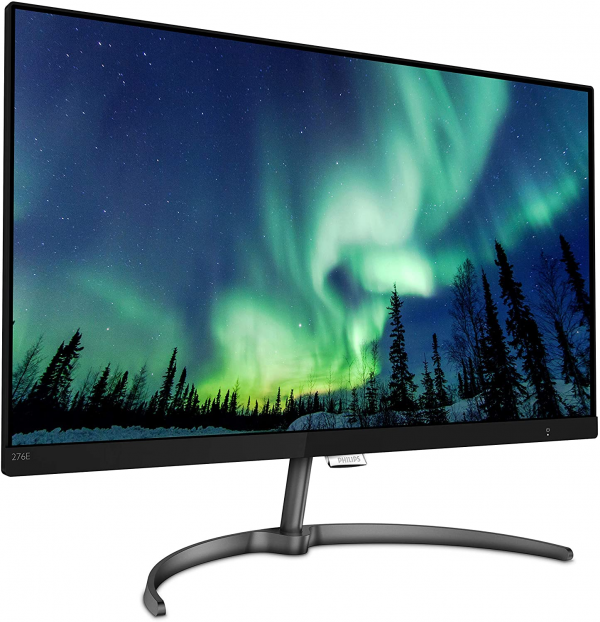
Ergonomics
The Philips 276E8V adopts a fairly classic design; the screen edges are black and only the aluminum foot in the shape of an arc of a circle gives a semblance of character to the whole. The coating of the mat slab prevents reflections.
The aluminum base is 18.9 cm deep, fairly average for a 27-inch model. In comparison, the foot of the 32-inch AOC Q3279VWF is limited to 15 cm. The monitor uses an external power supply, which is less practical for installation, but easier to change in the event of a problem.
Ergonomics is the weak point of this monitor. It just settles the tilt between -5 and + 20 °. The stand is not rotatable and, above all, it is impossible to adjust the height of the screen, a feature that is far from anecdotal.
The rear of the Philips 276E8V is very classic, but the glossy black plastic is a real dust magnet and a big fan of fingerprints. The connection, directly visible, is oriented perpendicular to the slab. There is no cable routing system; it will be tricky to make them disappear.
The connection consists of two HDMI 2.0 inputs, a DisplayPort input and a headphone output. The screen does not offer built-in speakers, so you have to go through a dedicated speaker kit or headphones.
It took us a little while to find the clickable joystick driving the OSD (settings menus). It is in fact neither on the right, nor on the left, nor under the panel, but in the center behind the screen, which is not very practical. Fortunately, this joystick remains the most efficient way to access all settings very quickly. Going to the right gives access to changing the source, mode (presets) and settings (brightness, contrast, sharpness, overdrive, gamma, etc.). The menus are readable and the navigation is fluid.
On a standard desk 140 cm wide and 60 cm deep, the 27-inch Philips 276E8V takes up only a small part of the desktop, far from the 34-inch footprint of the Alienware AW3418DW, the Philips 349X7F or the monstrous 49-inch Samsung C49HG90 with its 38.1 cm foot. On this Philips, the foot is only 18.9 cm deep. The latest versions of operating systems like Windows 10 or MacOS 10.4 handle Ultra HD definition perfectly and allow 150% efficient scaling. The text elements are large enough to be readable and the image is perfectly clear. On the other hand, the native definition of 3,840 x 2,160 px on a 27-inch panel is almost unusable without scaling.
By lowering the brightness to 35 to obtain a white at 150 cd / m², the Philips 276E8V consumes 18 W, ie a relative consumption of only 46 W / m²; this makes it the most economical monitor we have tested (against 100 W / m² on average in our comparison). This monitor consumes at least 8.5 W of brightness (66 cd / m²) and 20 W at 289 cd / m².
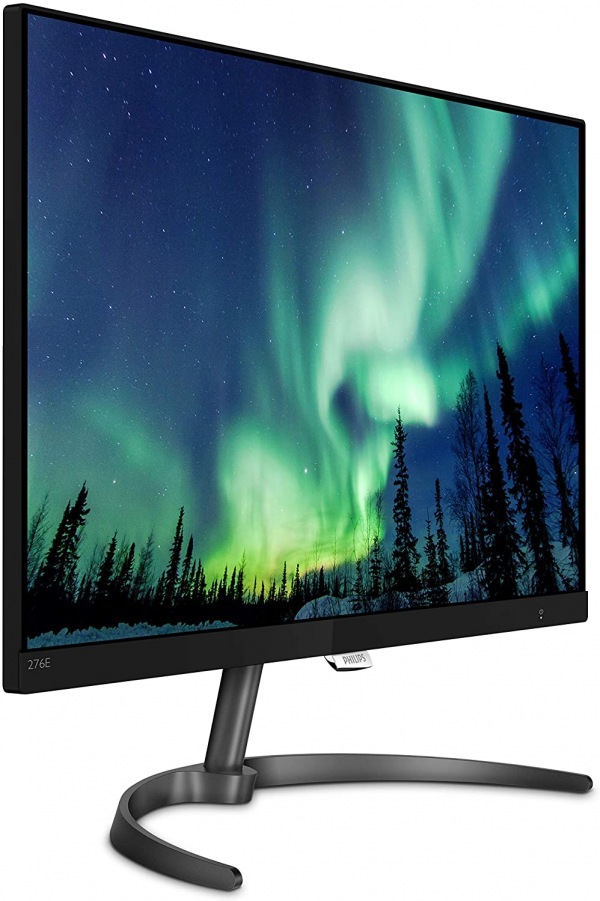
Colors and contrast
Default: average gray temperature: 7,290 K.
Default: gamma curve at 2.1.
Default: Delta E average at 2.5.
Out of the box, the rendering is not flawless. The temperature curve is stable, but the average measured at 7,290 K is a little too high, which results in a cold (bluish) image. The gamma curve shows some appreciable stability, but the average of 2.1 is not aligned with the reference one (2.2). The color rendering is very good: the average delta E is 2.5, a value less than 3 - below which the eye no longer perceives the difference between the colors requested and the colors displayed. However, the Delta E of green and yellow exceeds 4.
Manual adjustment: average gray temperature: 6.140 K.
Manual adjustment: gamma curve at 2.2.
Manual adjustment: delta E medium at 1.6.
To improve the rendering, we lowered the brightness to 25 in order to obtain a white close to 150 cd / m². We then chose BlueLow 1 mode (reduction of blue light) in order to bring the temperature down. It thus retains its stability and descends very slightly (6,140 K). With the default setting named "6,500 K", the temperature exceeds 7,200 K (see default results). The gamma rises slightly to settle on the reference value. Finally, the colors are very faithful, with an average Delta E of only 1.6, but the green remains above 4 (the yellow slightly exceeds 3).
Calibrated: average gray temperature: 6,560 K.
Calibrated: gamma curve at 2.2.
Calibrated: average delta E at 1.5.
The calibration of the screen using a probe makes it possible to smooth the gamma and temperature curves and to maintain this good colorimetry. On the other hand, even the probe cannot correct the defect found on the green and the yellow. You can download this color profile by following this link.
The contrast ratio of 910: 1 is fairly average for an IPS panel. In comparison, the Asus Designo MX27UQ exceeds 1,000: 1 and the best IPS (PLS), like the Philips 276E7, reaches 1,200: 1. In all cases, we are far from the contrasts offered by monitors fitted with a VA panel, such as the Textorm TX32 or the AOC Q3279VWF which exceed a rate of 4,000: 1. In the picture, this results in faded blacks. This is not problematic for office use and more generally in broad daylight; it's only really annoying in the dark and watching movies.
The average difference in lighting uniformity is 7% across the entire panel, an average value for a 27-inch screen. We found slight light leaks in the corners, but no clouding on our test model. In terms of viewing angles, IPS technology makes it possible to benefit from very open angles.
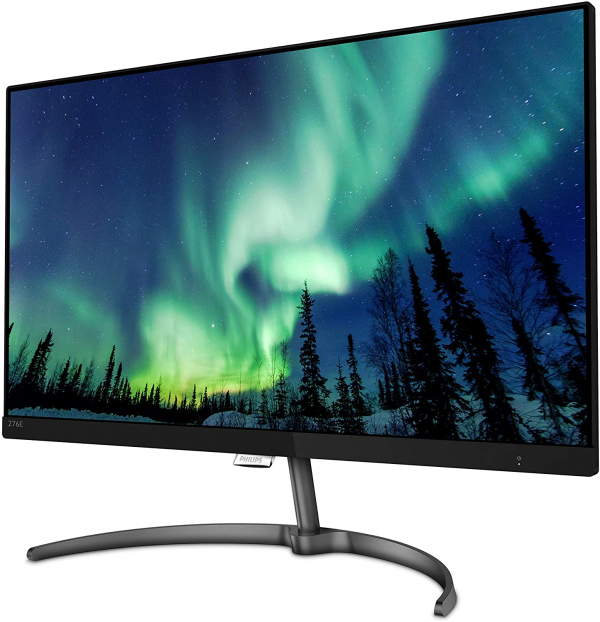
Reactivity
The Philips 276E8V does not use Pulse Width Modulation (PWM) to adjust the brightness. It therefore does not flicker and does not cause headaches in the most sensitive people. It also offers a blue light filter.
We measured the afterglow time at 1.5 ms with the overdrive set to "Faster". This value limits ghosting. Beyond this ("Fastest" setting), a slight reverse ghosting effect appears. Finally, we measured the delay in the display (input lag) at 9.7 ms (60 Hz). There is thus no offset between the source and the display on the monitor.
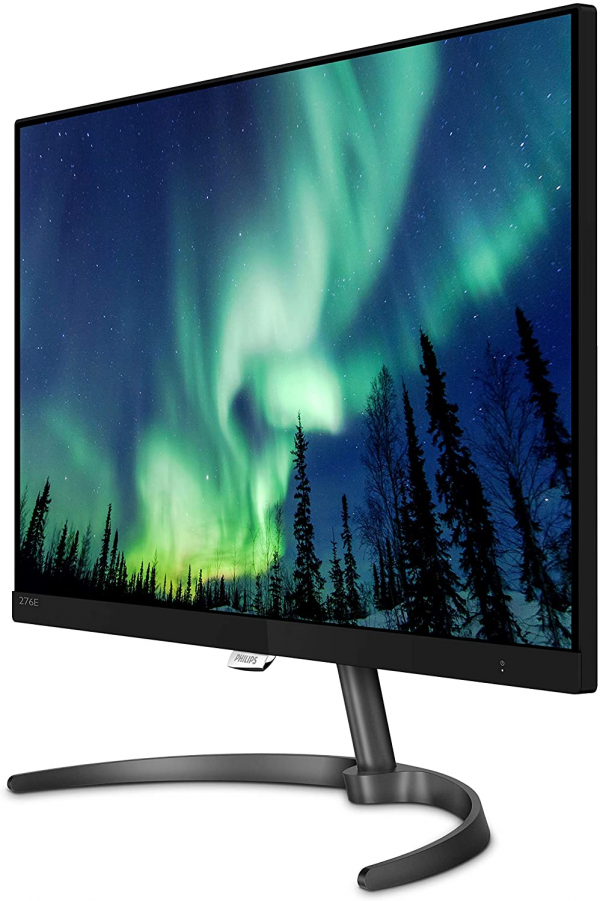
Conclusion
Like all monitors in this price range, the Philips 276E8V is handicapped by limited ergonomics, in particular the absence of height adjustment and the absence of USB ports, but for the rest, it delivers a more than correct service. After a few adjustments, it delivers a quality image and the Ultra HD definition is appreciable with systems and applications that know how to take advantage of it.
Specifications

